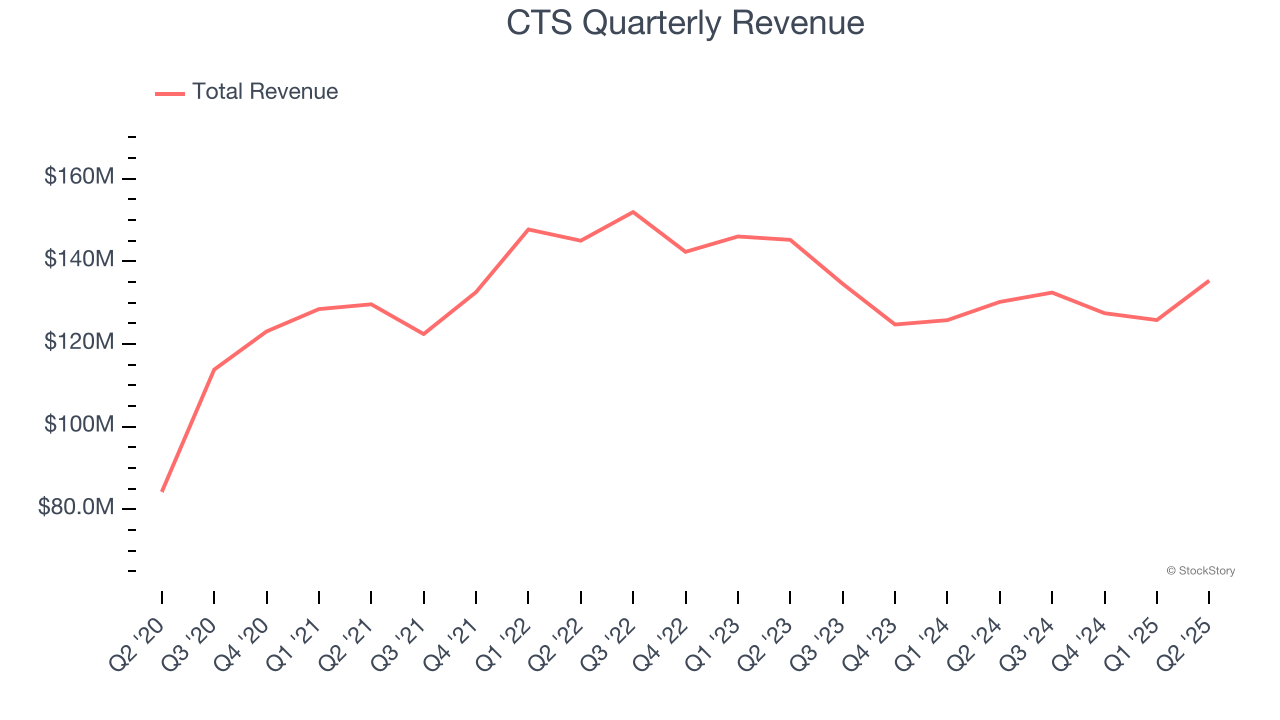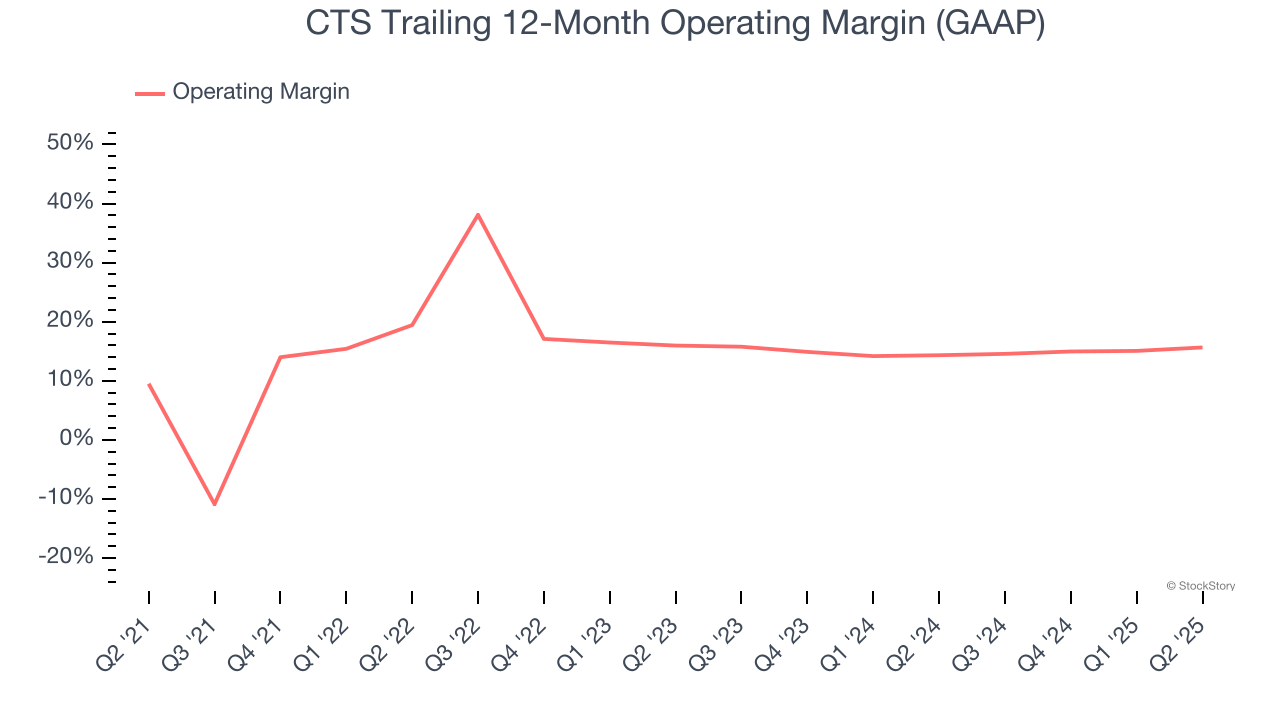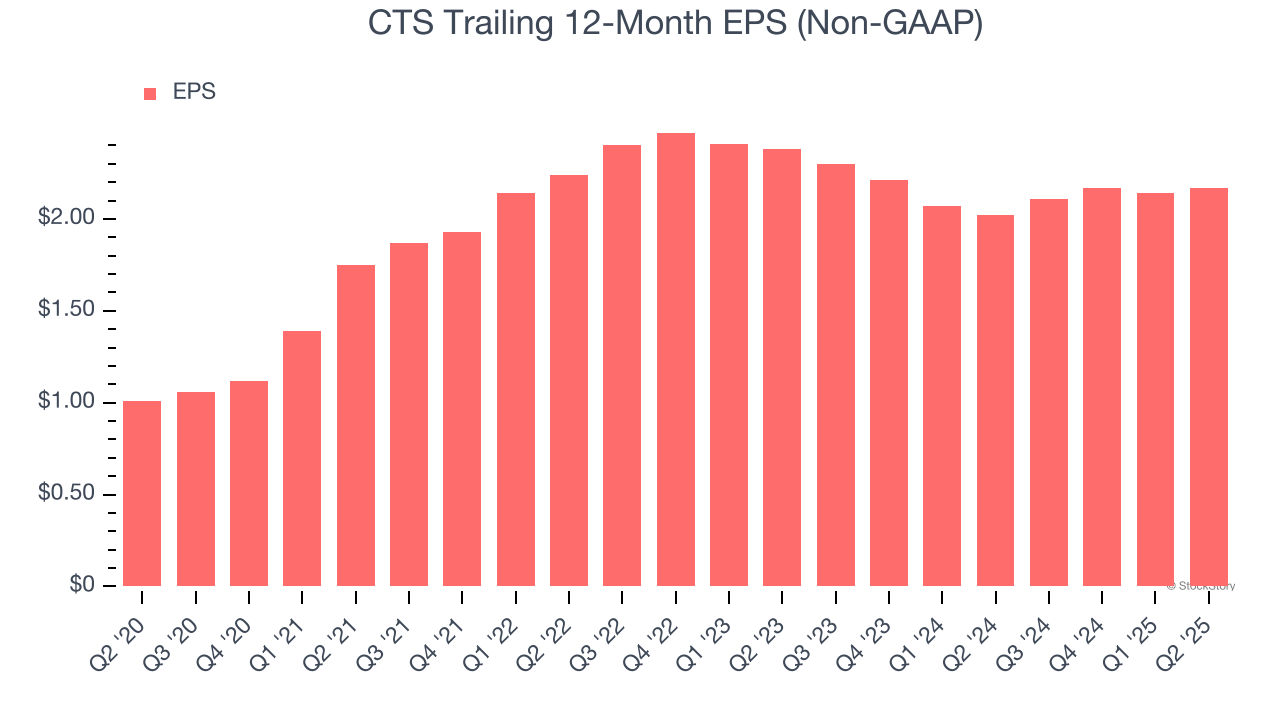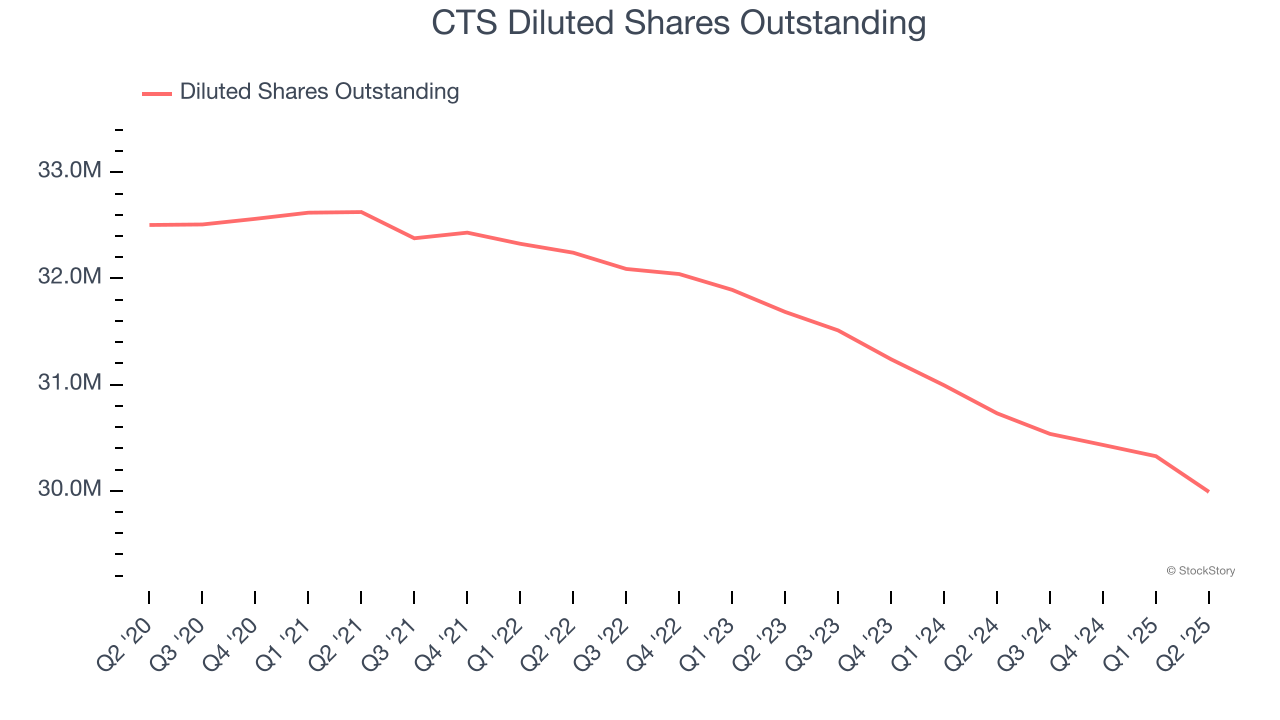
Electronic components manufacturer CTS Corporation (NYSE:CTS) reported Q2 CY2025 results exceeding the market’s revenue expectations, with sales up 4% year on year to $135.3 million. The company expects the full year’s revenue to be around $535 million, close to analysts’ estimates. Its non-GAAP profit of $0.57 per share was 3.6% above analysts’ consensus estimates.
Is now the time to buy CTS? Find out by accessing our full research report, it’s free.
CTS (CTS) Q2 CY2025 Highlights:
- Revenue: $135.3 million vs analyst estimates of $132.7 million (4% year-on-year growth, 2% beat)
- Adjusted EPS: $0.57 vs analyst estimates of $0.55 (3.6% beat)
- Adjusted EBITDA: $31.1 million vs analyst estimates of $29.01 million (23% margin, 7.2% beat)
- The company reconfirmed its revenue guidance for the full year of $535 million at the midpoint
- Management reiterated its full-year Adjusted EPS guidance of $2.28 at the midpoint
- Operating Margin: 16.8%, up from 14.5% in the same quarter last year
- Free Cash Flow Margin: 18.6%, up from 11.5% in the same quarter last year
- Market Capitalization: $1.21 billion
“We delivered another quarter of double-digit sales growth in the diversified end markets and achieved solid profitability with adjusted EBITDA margin expanding 130 basis points. We also generated strong operating cash flow in the quarter,” said Kieran O’Sullivan, CEO of CTS Corporation.
Company Overview
With roots dating back to 1896 and a global manufacturing footprint, CTS (NYSE:CTS) designs and manufactures sensors, connectivity components, and actuators for aerospace, defense, industrial, medical, and transportation markets.
Revenue Growth
A company’s long-term sales performance is one signal of its overall quality. Even a bad business can shine for one or two quarters, but a top-tier one grows for years.
With $520.9 million in revenue over the past 12 months, CTS is a small player in the business services space, which sometimes brings disadvantages compared to larger competitors benefiting from economies of scale and numerous distribution channels.
As you can see below, CTS’s 4.5% annualized revenue growth over the last five years was mediocre. This shows it couldn’t generate demand in any major way and is a tough starting point for our analysis.

We at StockStory place the most emphasis on long-term growth, but within business services, a half-decade historical view may miss recent innovations or disruptive industry trends. CTS’s performance shows it grew in the past but relinquished its gains over the last two years, as its revenue fell by 5.7% annually. 
This quarter, CTS reported modest year-on-year revenue growth of 4% but beat Wall Street’s estimates by 2%.
Looking ahead, sell-side analysts expect revenue to grow 6.5% over the next 12 months, an improvement versus the last two years. This projection is above the sector average and indicates its newer products and services will fuel better top-line performance.
Today’s young investors won’t have read the timeless lessons in Gorilla Game: Picking Winners In High Technology because it was written more than 20 years ago when Microsoft and Apple were first establishing their supremacy. But if we apply the same principles, then enterprise software stocks leveraging their own generative AI capabilities may well be the Gorillas of the future. So, in that spirit, we are excited to present our Special Free Report on a profitable, fast-growing enterprise software stock that is already riding the automation wave and looking to catch the generative AI next.
Operating Margin
Operating margin is a key measure of profitability. Think of it as net income - the bottom line - excluding the impact of taxes and interest on debt, which are less connected to business fundamentals.
CTS has been an efficient company over the last five years. It was one of the more profitable businesses in the business services sector, boasting an average operating margin of 15.1%.
Looking at the trend in its profitability, CTS’s operating margin rose by 6.1 percentage points over the last five years, as its sales growth gave it operating leverage.

This quarter, CTS generated an operating margin profit margin of 16.8%, up 2.3 percentage points year on year. This increase was a welcome development and shows it was more efficient.
Earnings Per Share
Revenue trends explain a company’s historical growth, but the long-term change in earnings per share (EPS) points to the profitability of that growth – for example, a company could inflate its sales through excessive spending on advertising and promotions.
CTS’s EPS grew at an astounding 16.5% compounded annual growth rate over the last five years, higher than its 4.5% annualized revenue growth. This tells us the company became more profitable on a per-share basis as it expanded.

Diving into the nuances of CTS’s earnings can give us a better understanding of its performance. As we mentioned earlier, CTS’s operating margin expanded by 6.1 percentage points over the last five years. On top of that, its share count shrank by 7.7%. These are positive signs for shareholders because improving profitability and share buybacks turbocharge EPS growth relative to revenue growth. 
Like with revenue, we analyze EPS over a shorter period to see if we are missing a change in the business.
For CTS, its two-year annual EPS declines of 4.5% mark a reversal from its (seemingly) healthy five-year trend. We hope CTS can return to earnings growth in the future.
In Q2, CTS reported EPS at $0.57, up from $0.54 in the same quarter last year. This print beat analysts’ estimates by 3.6%. Over the next 12 months, Wall Street expects CTS’s full-year EPS of $2.17 to grow 10.6%.
Key Takeaways from CTS’s Q2 Results
We enjoyed seeing CTS beat analysts’ full-year EPS guidance expectations this quarter. We were also happy its revenue outperformed Wall Street’s estimates. Overall, we think this was a solid quarter with some key areas of upside. The stock remained flat at $40.44 immediately after reporting.
Sure, CTS had a solid quarter, but if we look at the bigger picture, is this stock a buy? We think that the latest quarter is only one piece of the longer-term business quality puzzle. Quality, when combined with valuation, can help determine if the stock is a buy. We cover that in our actionable full research report which you can read here, it’s free.
